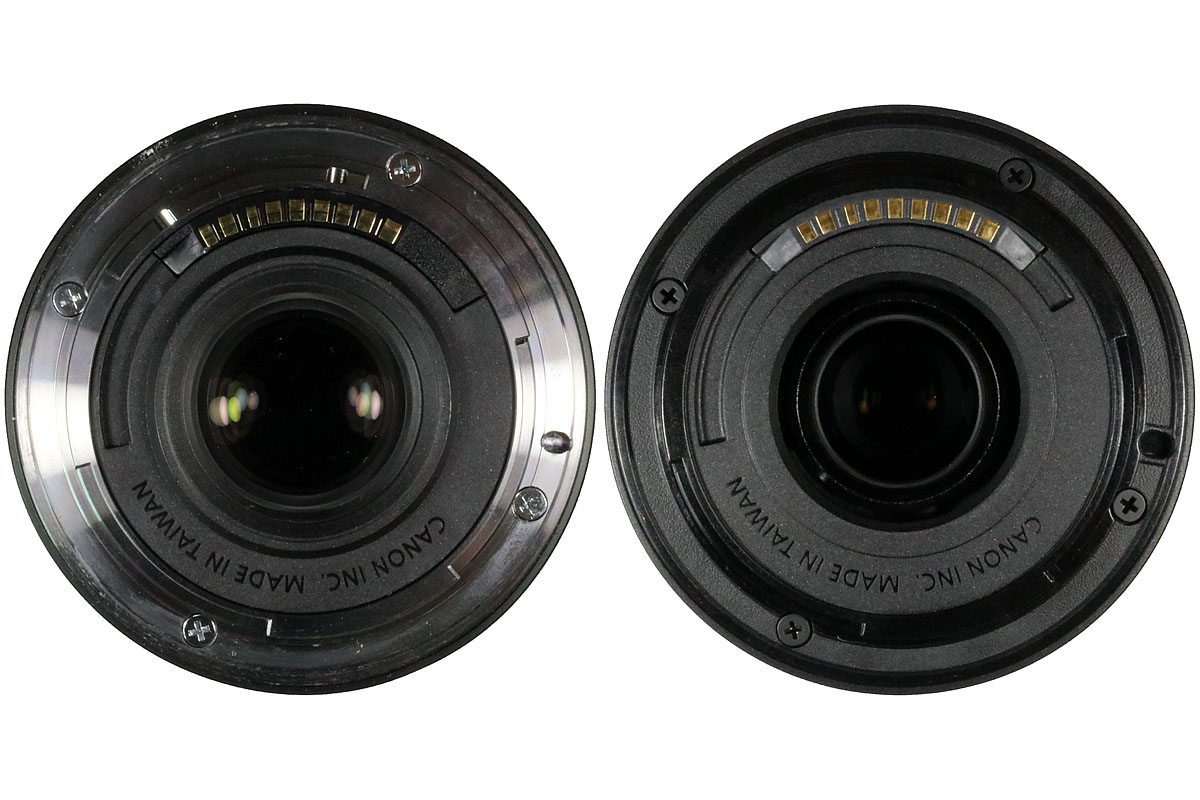Canon EF-M 11-22mm f/4-5.6 IS STM Mirrorless Lens Review
Video Review
You can watch my video review of this lens on YouTube at the following link:
Review Of The Canon EF-M 11-22mm Lens With Sample Photos
Product Images

- Canon EF-M 15-45mm f/3.5-6.3 IS STM
- Canon EF-M 18-150mm f/3.5-f/6.3 IS STM
- Canon EF-M 28mm f/3.5 IS Macro STM
- Canon EF-M 55-200mm f/4.5-f/6.3 IS STM
Sample Images
A few photos taken with the Canon EF-M 11-22mm f/4-5.6 IS STM lens.

Canon EF-M 11-22mm f/4-f/5.6 | Focal length: 11mm | Canon EOS M6 | ISO:100 | Aperture: f/8 | Shutter Speed: 1/250s

Canon EF-M 11-22mm f/4-f/5.6 | Focal length: 16mm | Canon EOS M | ISO:100 | Aperture: f/11 | Shutter Speed: 1/50s

Canon EF-M 11-22mm f/4-f/5.6 | Focal length: 11mm | Canon EOS M | ISO:100 | Aperture: f/8 | Shutter Speed: 1/125s

Canon EF-M 11-22mm f/4-f/5.6 | Focal length: 11mm | Canon EOS M | ISO:100 | Aperture: f/8 | Shutter Speed: 1/160s

Canon EF-M 11-22mm f/4-f/5.6 | Focal length: 13mm | Canon EOS M | ISO:100 | Aperture: f/4.5 | Shutter Speed: 1/30s

Canon EF-M 11-22mm f/4-f/5.6 | Focal length: 18mm | Canon EOS M | ISO:320 | Aperture: f/5 | Shutter Speed: 1/40s

Canon EF-M 11-22mm f/4-f/5.6 | Focal length: 15mm | Canon EOS M | ISO:2500 | Aperture: f/4.5 | Shutter Speed: 1/30s

Canon EF-M 11-22mm f/4-f/5.6 | Focal length: 11mm | Canon EOS M | ISO:100 | Aperture: f/5 | Shutter Speed: 1/800s
Canon Marketing Strategy
This is a cracking little lens for the Canon EOS M mirrorless system, but first I need to get something off my chest.
Since my two children arrived it has completely changed every aspect of my life, including photography. With two kids in tow it is now no longer possible to cart a heavy bag full of SLR gear around and, even if it was, I wouldn't have sufficient time to set up my gear.
My previous Canon S90 was very portable and light, but the image quality was lacking. The EOS M system solved that problem for me. It's still very portable and the image quality is fine for my needs.
The initial purchase of the EOS M body, two lenses (Canon EF-M 18-55mm f/3.5-5.6 and Canon EF-M 22mm f/2) and the Canon EF to EOS M Mount Adapter was easy. However, buying the EF-M 11-22mm was not easy.
The reason for this is that Canon has decided to only sell certain EF-M lenses in certain territories. This is crazy. I live in Thailand, but had to travel to Malaysia to buy this lens. I also know that people living in the United States have bought the lens in Canada.
The EF-M 55-200mm f/4.5-6.3 isn't high on my list of priorities, but again, if I wanted to buy this lens I would have a problem. Why has Canon done this? Why can people in certain countries only buy some parts of the EOS M system but not others? It doesn't make sense.
It annoyed me further when I picked up the Thai version of Canon's 'You Can' magazine, which showcases lots of Canon products. The EOS M system was featured, including the EF-M 11-22mm f/4-5.6 IS STM and EF-M 55-200mm f/4.5-6.3 IS STM lenses.
Despite the fact that this magazine is produced in Thailand for the Thai market, it features products that aren't actually available in Thailand. Canon, you are a great company, but please get your act together regarding this particular subject.
User Impressions
Since buying this lens it has remained attached to my EOS M for about 98% of the time. I love it! Occasionally I would like some more focal length, but it's good for most general purposes.
Images taken with Ultra Wide Angle (UWA) lenses at a distance normally tend to look quite boring because the subject is small and insignificant. However, if you get in close and fill the frame it makes for some really interesting perspectives, especially as the huge DOF keeps everything in focus.
Focusing
As with several new Canon lenses, this lens uses new stepper motor (STM) technology for its autofocus mechanism. This is all part of Canon's drive to implement silent continuous autofocus tracking in movie mode. To do this requires an appropriate body with a hybrid CMOS sensor and contrast detection AF technology, and a lens with an STM designation.
There is no direct physical connection between the manual focusing ring and the internal focusing mechanism as there is on other lenses. If you turn the ring with the camera off nothing happens. Turning the ring sends a signal to the stepper motor which then focuses the lens electronically.
Autofocus is accurate and as fast as I need. There are limitations with the EOS M system, specifically photographing sport and other fast moving subjects.
Manual Focusing
Unlike my Canon EF and EF-S lenses, manual focusing isn't as easy with the EOS M system as simply turning the lens focus ring, or manually switching the lens into MF mode first and then turning the lens focus ring.
There is no AF/MF switch on the EF-M lenses and, because of the stepper motor technology and a lack of any physical connection between the focus ring and the focusing mechanism, nothing happens most of the time when you turn the focus ring.
To enable manual fousing, first you must go into the menu system and find 'Focus mode' (the camera icon with two dots). This mode has three options:
- AF (Auto Focus). When in this mode the focus ring is completely inoperational.
- MF (Manual Focus). In this mode the Auto Focus is completely inoperational and turning the focus ring controls the focusing mechanism whenever the camera is switched on.
- AF+MF. This allows the Autofocus to operate and also allows the user to focus manually after the autofocus has activated. However, you can only focus manually while pressing the shutter release halfway down after the Autofocus has activated.
When the camera is put into MF mode a small magnifying glass icon appears on the rear LCD in the bottom right-hand corner. Tapping on the icon cycles through 1x, 5x and 10x magnification with an accordingly larger image shown on the display. This is very similar to the Liveview feature on Canon SLRs.
In cases where the Autofocus mechanism won't do what you want it to do, such as with close macro work, this is very useful. Saying this, I have never used MF on my EOS M, which stays permanently in AF mode. The only time I use manual focusing is for macro work and the EOS M body isn't my first choice for macro.
Zooming And Locking
Probably the first thing that new users of this lens will notice is that they can't use their EOS M after mounting this lens. They will just see a message on the rear LCD: "Set the lens to the shooting position"
The lens is at its shortest when not being used in the storage position. When retracted into the storage position it locks automatically and cannot be used. To use the lens it is first necessary to unlock it using a small sliding latch, and to rotate the lens so that it extends.
At 11mm focal length you will hear a small click as the lens exits its locked position. You can now freely rotate the zoom ring and zoom between 11mm and 22mm.
The lens is at its longest at 11mm focal range. As you zoom to about 16mm it retracts slightly and from 17mm to 22mm it begins to extend again. At 22mm the lens is slightly shorter than it is at 11mm, but not very much.
There is no rotation of the inner barrel while zooming, therefore there won't be any problems with filters that are rotationally sensitive, such as polarising filters.

Canon EF-M 11-22mm lens lock
Focal Length
This lens is roughly the equivalent of a 18-35mm lens on a 35mm (full frame) camera. It's a useful zoom range for a general walkabout camera and can be used in most situations. Canon makes a 16-35mm full frame lens and an EF-M 11-22mm would have been equivalent. It would also have been the same focal length as the EF-S 10-22mm.
A focal length range of 10-22mm would have seemed more obvious, but presumably there were technical or financial reasons why this didn't happen. Or perhaps this would have meant a bigger lens, which would have defeated the objective of the EOS M system.
Image Stabilisation
From a user perspective, the optical image stabilisation with this lens is the same as the EF-M 18-55mm. It's silent, but activates quickly and is effective.
After using this lens a lot and getting used to the IS without really realising it is present, it feels a little strange going back to using the EF-M 22mm, which has no IS.
Image Quality
The image quality with this lens is really excellent, both at the centre and in the corners. I don't pixel peep and I don't buy camera equipment solely to assess its technical qualities. I buy camera equipment because I need to take photos for practical purposes.
I take photos of lots of different subjects to use on various parts of this website (most travel related) and I take photos of my family to print and hang on my walls.
Image quality and technical performance aren't the be-all and end-all, but they are far from insignificant. When I go out taking photos my eqipment needs to work reliably and accurately, and the resultant images need to be good enough in the event that I want to make a 30" x 20" print.
I don't know how useful this really is, but the three images below are from the same photo. The first is the overall scene resized for the web, and the second two are 100% crops - one from the centre and one from the bottom right-hand corner.
These images are straight of the camera in JPG format with NO sharpening or post-processing. I used the Auto Picture Style, which has a sharpness setting of 3 (out of 7), therefore a degree of in-camera sharpening was performed during the RAW to JPG conversion.

Overall scene resized

100% crop from centre of scene

100% crop from corner of scene
Vignetting
I don't refer to these pages as 'technical reviews' and I don't set out deliberately to find optical flaws with lenses, as most lens review sites do. I just consider myself a normal user and report my findings from that perspective.
If I was doing technical reviews I would shoot in RAW and then carefully analyse light fall-off from the centre to the edges. I don't.
With my SLR system I am still a dinosaur in my workflow. I use RAW images from the camera and attempt to fix all of the lens flaws in post-processing.
With the EOS M I shoot in JPG and let the clever conversion firmware in the camera do all the hard work for me. It makes a lot more sense. In the menu there is a 'Lens aberration correction' option. My EOS M knows about the optical flaws with the lens that is currently attached to the camera and it corrects them automatically before providing me with a JPG file.
I have the camera set so that corrections with both peripheral illumination (vignetting) and chromatic aberration are enabled. This way, I can't detect any noticeable vignetting in the JPG images that I use.
Regarding the great RAW vs JPG debate, I take no sides. I can understand the advantages of RAW for certain situations, but it certainly isn't necessary all the time.
Camera manufacturers have made huge advances in recent years and the quality of JPG files produced these days is excellent. Certainly for 99.9% of my needs the JPG files are perfectly adequate and I don't have to mess around with post-processing as much as I used to.
Versus EF-S 10-22mm
Many people are obsessed with comparing lenses of the same, or similar, focal length, but I use the EOS M system because it is small, light and easy to carry around. Using big lenses would defeat the whole purpose of having this system, even if they offered better image quality.
Having said this, the following images offer a very basic comparison between the Canon EF-M 11-22mm IS STM and the Canon EF-S 10-22mm. Both images were taken with my EOS M, using the Canon EF-EOS M Mount Adapter for the EF-S lens.
When using each lens at its widest zoom setting you can see that the extra 1mm of the EF-S 10-22mm makes a slight difference to the perspective. The images were taken using a tripod at exactly the same position, although the framing was slightly different. Instead of being able to just swap lenses while leaving the body on the tripod, I had to remove the body from the tripod in order to remove the quick release plate that was attached to the EF-EOS M Mount Adapter and then remount it.
This was the first time I had carried out a comparison of these two lenses and although both lenses exhibit roughly the same degree of sharpness I was quite surprised at how much more vibrant the image looks from the EF-S 10-22mm in the wide angle shot. The colours just look a lot nicer and there is more detail in the shadows.
I attribute this to using centre-weighted average metering for different fields of view as a result of the 1mm difference between the two lenses at the wide end and also to varying amounts of white cloud in the background. It is noticeable that when both lenses are zoomed to 22mm focal length there is very little difference, however, I have to admit that in both shots I prefer the colours and contrast from the EF-S 10-22mm.
I will continue to use the EOS M with EF-M lenses as my daily walkaround system for its size, weight and convenience, but on assignments in which image quality is more important than weight or convenience there is still a place for my EF and EF-S lenses.

Canon EF-M 11-22mm at 11mm, ISO: 100, Shutter Speed: 1/640s, Aperture: f/8

Canon EF-S 10-22mm at 10mm, ISO: 100, Shutter Speed: 1/640s, Aperture: f/8

Canon EF-M 11-22mm at 22mm, ISO: 100, Shutter Speed: 1/1000s, Aperture: f/8

Canon EF-S 10-22mm at 22mm, ISO: 100, Shutter Speed: 1/1000s, Aperture: f/8
Extenders and Extension Tubes
Currently, there are no Canon extenders or extension tubes available for Canon EF-M lenses. I don't know if Canon has any plans to make these items available in the future. I have seen third-party EF-M extension tubes advertised on-line, but no teleconverters. Extension tubes don't contain any optics so provided the physical connection is good and they transmit the electronic signals correctly they should be fine.
Accessories
This lens comes with the new style Canon lens caps that can be released by pinching the centre of the cap. A lens hood (EW-60E) and soft case (LP814) are available, but not included.
Street Photography
Due to its small size and inconspicuous nature, the EOS M system is perfect for street photography and the lenses in the system all have their own different merits.
The EF-M 22mm f/2 is fast and more suited to low light situations. It is also the smallest EF-M lens available. The EF-M 18-55mm and EF-M 11-22mm are a little bigger, but both offer image stabilisation. The image quality with all three of these lenses is excellent.
For subjects that are more distant the The EF-M 18-55mm is more suitable, but if you can get close to your subject and/or are indoors the EF-M 11-22mm is probably a better choice.
For street photography I enjoy using all three lenses, but my general prefernce is for the EF-M 11-22mm because of the unique perspectives that UWA lenses provide.
On most occasions I take just one lens with me and make a decision before I go. However, even if I decide to take more than one lens it isn't too much of an issue because the lenses are so small and light.
Conclusion
As I said above, this is the lens that stays attached to my EOS M most of the time. I find the wide field of view extremely useful and the image quality is superb. I carry the whole package in a small LowePro case and even when travelling around with a young family it is light and easy to carry.
The system is larger and heavier than the S90 that I used to use, but the image quality is far better, allowing me to make prints up to 30" x 20" to hang on the walls. Carrying the system around when travelling with young children is practical, whereas carry my SLR system around certainly isn't.
For those who were 'on the fence' regarding the EOS M system before the EF-M 11-22mm became available, this lens could be the deciding factor.
That is, of course, if you can actually buy it where you live. I make the point again that I can't understand Canon's marketing decision to sell part of the system in certain geographies, but not the entire system.
It is extremely frustrating for customers who have bought into the system (and like it) when they have difficulties buying more lenses.
Would I Buy One Now?
Try stopping me. For EOS M owners this is the lens that I recommend most for general photography and if I could only have one EF-M lens it would be this one.
Sure, the maximum focal length of 22mm is limiting at times, but for general walkaround/street photography this is the one I always find myself using.
Occasionally, I switch to the EF-M 18-55mm and forget. When I go to take a shot and the minimum focal length is only 18mm I really find myself wanting to get wider.
Post-Processing
Original images were shot in JPG format using the EOS M's built in lens aberration correction. Noise was reduced using Imagenomic Noiseware Professional. Small amounts of image enhancement were applied using Adobe Photoshop CS2 (curves, levels, saturation) before sharpening using the Smart Sharpen filter (Amount: 30% - 120%, Radius: 0.2px - 0.3px, Remove: Lens Blur).
The large JPG images that open if you click on a thumbnail were saved with a 'High' quality setting of '8' on a scale of 0-12.
Lens Details
Weight: 220 g/7.8 oz
Filter Diameter: 55mm
Closest Focusing Distance: 0.15m
Minimum Aperture: f/22-f/32
Maximum Aperture: f/4-f/5.6
Autofocus: Stepper Motor
Date Purchased: October 2014
Supplier: Canon EOS Boutique, Penang, Malaysia
Price: 1,250 Malaysian Ringgits
Lens Cap: E-55
Lens Hood: EW-60E (not included)
Soft Case: LP814 (not included)
Other Review Pages You May Be Interested In


